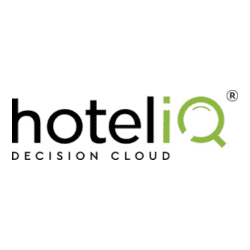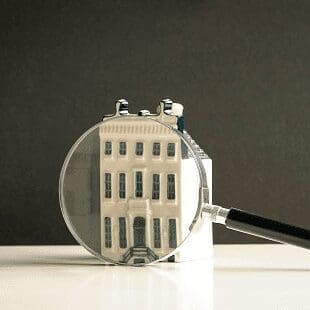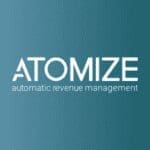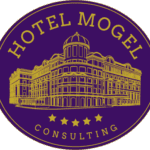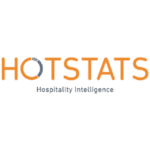 Data and analysis provide the foundational insights to set realistic, meaningful, and strategic objectives. Whether it’s market data, competitive analysis, customer feedback, or internal operational metrics, these data points collectively inform where the opportunities and challenges lie and where to focus the objectives.
Data and analysis provide the foundational insights to set realistic, meaningful, and strategic objectives. Whether it’s market data, competitive analysis, customer feedback, or internal operational metrics, these data points collectively inform where the opportunities and challenges lie and where to focus the objectives.Setting objectives without grounding them in data and facts is like dreaming or guessing. While dreaming big is essential to leadership and innovation, balancing this with a strong understanding of the current reality is crucial to ensure goals are feasible and aligned with business needs.
That’s why many hotel organizations today invest in data analytics capabilities and create a data-driven culture. By consistently collecting, analyzing, and making decisions based on data, they can set more effective objectives, make better strategic decisions, and continuously monitor their progress toward their goals.
Start with Market Research
Market research is essential in setting any business goals, including OKRs. OKRs, or Objectives and Key Results, are a strategic framework used to develop, track, and achieve ambitious, measurable goals in an organization. You can effectively set objectives and tailor your offerings by fully understanding your market – including your target segments’ size, demographics, preferences, and behaviors.
While OKRs can technically be created without in-depth market knowledge, doing so would risk setting goals that are either unrealistic or not fully aligned with the best opportunities in your market.
Market knowledge is crucial because it provides the context within which your hotel operates. It helps you understand the needs and behaviors of your customers, the competitive landscape, and the broader trends shaping the industry. Without this understanding, you might set OKRs that sound good on paper but don’t drive your hotel’s growth or competitive advantage.
For example, suppose you set an OKR to attract more eco-conscious travelers without knowing whether your destination is a significant market for eco-tourism. In that case, you might invest time and resources in initiatives that have little impact on your bottom line. If the market data suggests otherwise or shows a more attractive segment that matches your hotel’s capabilities and positioning, it would be wise to target that segment instead.
For the hotel industry, some crucial market research steps include:
- Analyzing Market Size & Trends: How many travelers fall into your target segment? Is this number growing or shrinking? What key trends influence this segment (e.g., a growing preference for sustainable travel)?
- Understanding Customer Preferences & Behaviors: What are your target segment’s key preferences and behaviors? What factors influence their decision-making? How much are they willing to spend?
- Studying the Competition: How many other hotels are targeting the same segment? What are they offering? How can you differentiate yourself?
- Evaluating Market Potential: Given the size of the segment, the competition, and your hotel’s capabilities, is it profitable to target this segment?
Once this research is complete, you can set your OKRs based on the insights you’ve gained. If the study suggests that eco-conscious travelers are a viable target, the OKRs could be developed around this target group. If the research points you differently, the OKRs must be adjusted accordingly.
Market research will ensure that your OKRs are not only ambitious and measurable but also grounded in reality and strategically sound.
Understand Your Business
In addition, you need to understand your business.
This involves analyzing factors within your direct control and reflecting on your hotel’s current performance and potential. This might include:
- Operational Performance: This includes room occupancy rates, average revenue per room, cost of acquisition, staff performance, and more. This data can help you identify operational strengths and areas for improvement.
- Financial Performance: Review your revenue, costs, profit margins, and other key financial indicators. This data provides insights into the financial health of your hotel.
- Customer Feedback: Analyzing guest feedback can provide insights into what you’re doing well and where you can improve the guest experience.
- Human Resources: Employee performance, satisfaction, and retention rates are all significant to consider, as your staff is critical in delivering excellent guest experiences.
- Infrastructure and Technology: The quality of your physical facilities and the effectiveness of your technology systems can significantly impact operations and the guest experience.
- Brand and Marketing Performance: Your brand image, customer perceptions, and the effectiveness of your marketing efforts can impact customer acquisition and retention.
- Sustainability Practices: Your hotel’s environmental impact and sustainability practices can affect your reputation and appeal to specific customer segments.
By basing your OKRs on these types of data and analysis, you can set objectives that are both ambitious and grounded in reality. This will increase the likelihood of achieving your goals and driving the success of your hotel.
Envision the Future
Setting OKRs should start with a comprehensive understanding of the external market conditions and the internal performance of your hotel. This forms a solid foundation for goal setting. Here’s a step-by-step guide on how this process can look:
1. Understand the Market: This is where you assess the external factors. This can be done by identifying trends, studying competitors, understanding customer behaviors and preferences, considering regulatory changes, etc. This step will give you an understanding of your hotel’s market potential and opportunities.
2. Understand Your Current Position: This step thoroughly assesses your hotel’s internal state. It includes evaluating your hotel’s operational and financial performance, analyzing customer feedback, assessing your staff’s performance and capabilities, checking your brand image and reputation, and more.
3. Envision the Future: After understanding where you are and what the market offers, it’s time to decide where you want to go. This should be guided by your hotel’s mission and strategic objectives, but it’s also about ambition and innovation. You may see an opportunity to capture a new market segment or believe your hotel can dramatically improve its operational efficiency.
4. Set Objectives: Now, you translate this vision into specific objectives. An objective is a clearly defined goal that is both ambitious and realistic. For example, it could be “Become the preferred hotel for eco-conscious travelers in our city.”
5. Define Key Results: Finally, you define critical results for each objective. These are specific, measurable outcomes that, if achieved, will ensure the goal is met. For example, a key result for the above objective could be “Increase the percentage of guests who rate our hotel’s sustainability efforts as ‘excellent’ from 50% to 75%.”
In essence, the OKR process involves understanding where you are and where the market could potentially allow you to go and defining a clear path from the current state to the desired future state. This dynamic process should be revisited and revised as market conditions, competitive landscapes, and your hotel’s internal capabilities evolve.
Challenges
While the process may seem straightforward, there are indeed several challenges that hotel companies often face when setting OKRs. Some of these include:
- Data Availability and Quality: To understand the market and the current position of the hotel, it’s necessary to gather and analyze a large amount of data. This data may come from various internal and external sources and may not always be readily available or in a usable format. Even when data is available, it might be of poor quality or unreliable, leading to incorrect conclusions.
- Interpreting Data: Even with good-quality data, analyzing it to draw meaningful conclusions can be challenging. This requires a good understanding of the data and the broader context in which your hotel operates.
- Balancing Objectives: OKRs should be ambitious to inspire improvement and growth but not so ambitious that they become unrealistic and demotivating. Striking the right balance can be difficult.
- Alignment Across Teams: Ensuring all teams and departments are aligned with the overall OKRs is crucial for success. Misalignment can lead to conflicting priorities and inefficient use of resources.
- Monitoring Progress: Once OKRs are set, they need to be regularly reviewed, and progress needs to be monitored. This requires a commitment to ongoing data collection and analysis and a willingness to adjust OKRs as needed.
- Communicating OKRs: Clear communication of OKRs throughout the organization is essential. Everyone needs to understand the OKRs, why they’ve been chosen, and their role in achieving them.
- Cultural Resistance: Change can be difficult, and setting ambitious OKRs often requires changes to established ways of doing things. Overcoming resistance to change and creating a culture where striving for ambitious goals is seen as positive can be challenging.
Despite these challenges, setting and implementing OKRs can significantly benefit hotels, helping them focus their efforts, align their teams, and drive substantial performance improvements.



